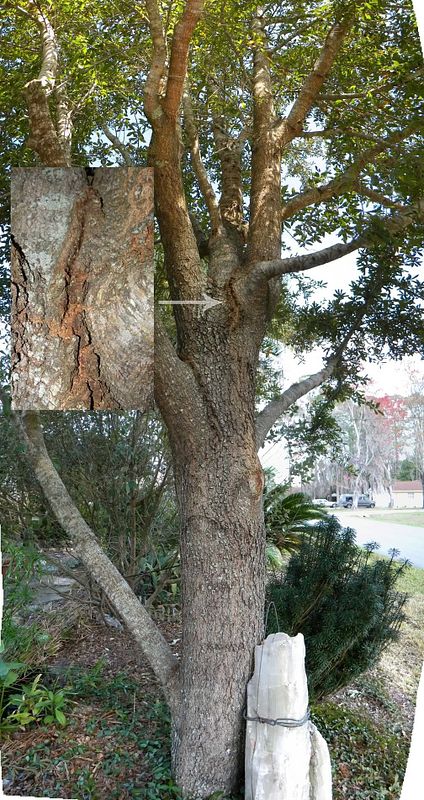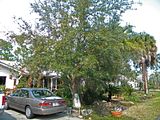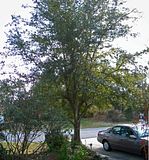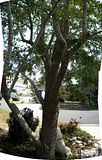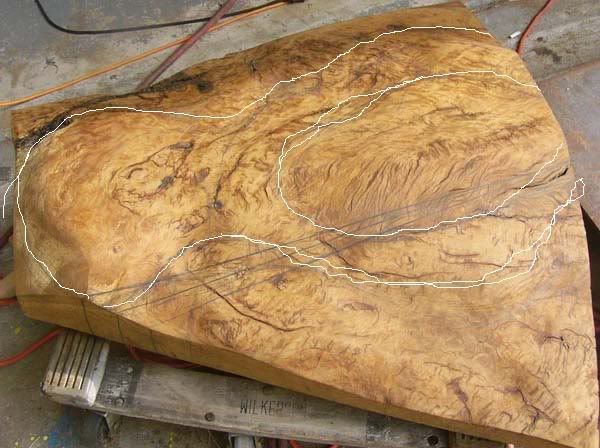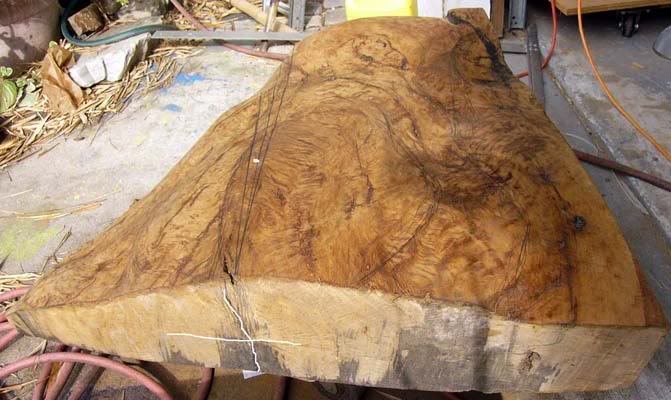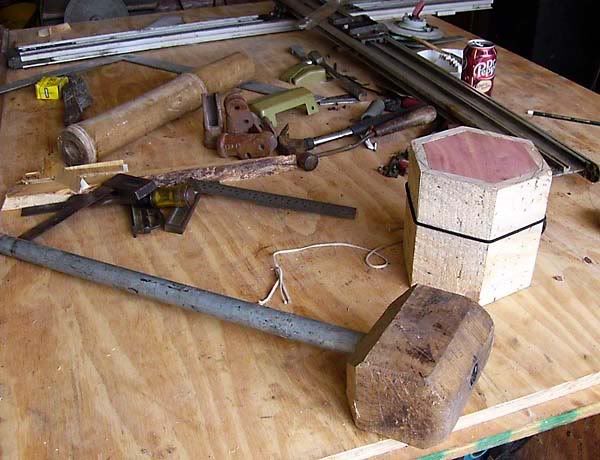Thank you Pete
I had been meaning to take these pictures and get advise for quite a while. I was beginning to wonder if all the real arborist had left the building. I know exactly what you are illustrating here. I have an Example myself. This tree limb was attached about 20 feet up in the air and that broken Crotch was well over 6X8 feet (see 6 foot chain link and 8 foot wall as reference ) It was holding an incredible amount of weight as it went horizontal for about 40 feet before diverging to spread over 100 feet perpendicular to the support collar that Broke.
I have studied this tree and many others watching over the years to see the results of my pruning and the expected regrowth. This peice of wood that still sits in my Garage awaiting inspiration is the heart of that break. Live oak is very dense already but the compression between these leaders cause this wood to be especially heavy and the grain contorted.
So much so that this Mallet I made has seen some severe abuse pounding pavers while barely getting a mark on it.
Originally I had planned to subdue one of the leaders or remove it altogether, but it just grew so damn fast that it is now a significant part of the canopy.
I have played with the Idea of Pinning it early with a big 1" SS pin I have on hand and allow for it to Grow into the Trunk but was pretty hesitant to do it just yet.
I already expect I will Cable this tree significantly before I am too old to climb it as I am encouraging a lot of lateral growth and I know How Live oaks bow down with age.
Thanks for confirming my thoughts on the smaller Branch collar, I was thinking that might be inhibiting the smooth integration of the two leaders wood by the nature of the collars habit and it was on the cut list.
Do you think that Beyond that I can change this inclusive bark trend By any of these methods
- Restricting one of those leaders by pruning it more.
- regularly removing any dead cambium within the crevice.
- Perhaps surgically attempting to go deeper and scrape the living outer cells to force scar tissue to weld the growth of the xylem back together ?
If I do decide to go ahead with the early Pinning Would I position the pin Just above the present gap and expect the Crotch to envelop it?
It seems that higher support cables or pins might act as a fulcrum that would further push the two apart with motion from the top of the leaders.
Another consideration I have is that really low leaders future. I have encouraged it from the beginning and it has achieved a position of dominance on that side of the tree, at present it runs pretty vertical By design in order to compete with the limbs over it However as it gains weigh I expect it to sag toward the house, this is the intent but it may require cable support from the inclusive leader as it is directly across from it and would be the natural choice.
